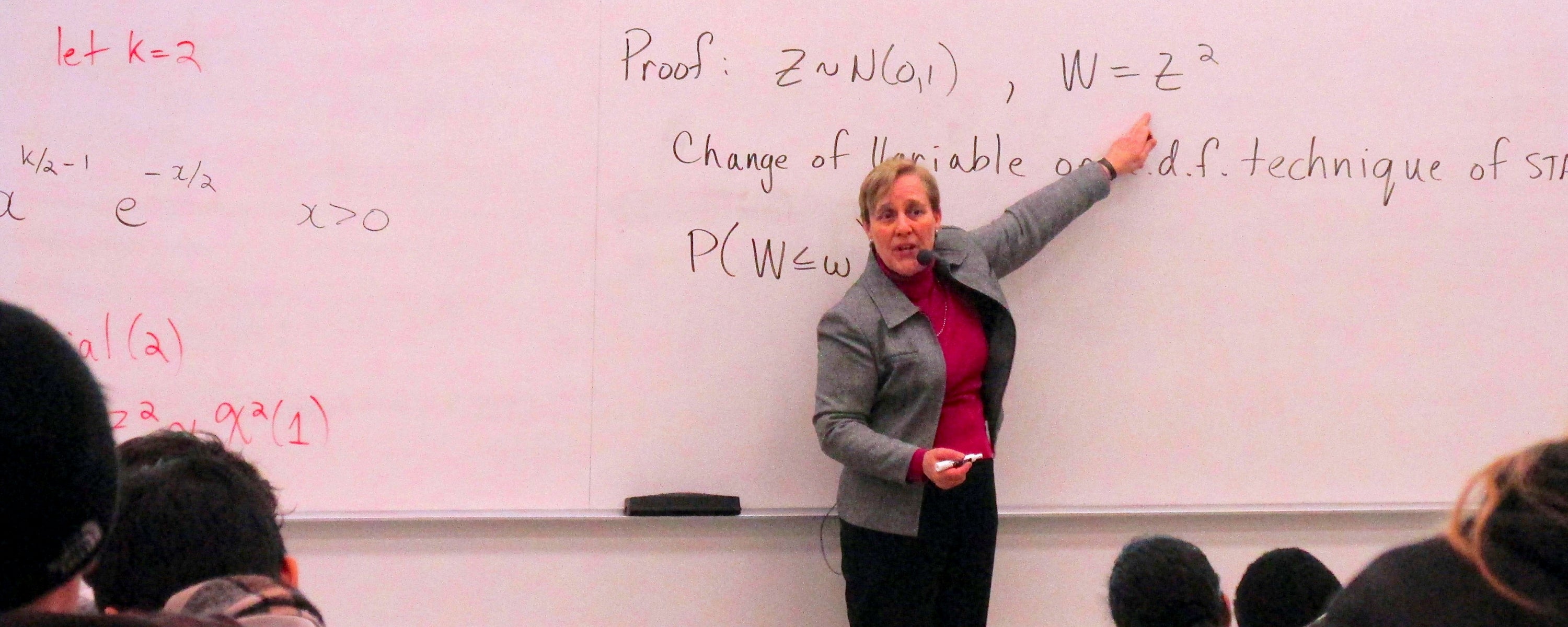Cyntha Struthers: Finding Joy in Learning
|
|
|
Cyntha Struthers, Department of Statistics and Actuarial Science
|
Written by Kelly Stone, Special Projects (Teaching Stories), CTE.
I always assumed teaching math couldn’t be that enjoyable: all those numbers and equations spinning dizzily in one’s head. However, my opinion of teaching math has changed after speaking with Dr. Cyntha Struthers, who offers courses in both probability and statistics, and who is currently the Teaching Fellow for the Faculty of Mathematics. When I asked Struthers why she loves teaching, her eye-opening response was, “You put me in front of a classroom, and there’s this switch that goes off – it’s show time! So I actually have a lot of fun teaching.”
When teaching foundational courses in Statistics to over 600 students, making concepts understandable is essential. As Struthers explains, “because these courses are so fundamental, and because they are the first courses that students see, they’ve got to be the best they can be.” Struthers recently did a major revision to the STAT 231 course notes to make this mandatory course more appealing to her students. Making such revisions takes time, but Struthers is motivated by the opportunity to communicate new ideas and to help students who are struggling. Getting a student to enjoy the course by the end of the term is a powerful incentive for Struthers to keep enhancing her teaching practice.
Struthers acknowledges that there are challenges to teaching math-based courses. “When I teach Statistics, I have math students who are often very black-and-white thinkers. They don’t mind hard problems, but they want an actual clear-cut answer at the end.” Such a mindset, says Struthers, can create distress for students because uncertainty is an integral part of statistics: “There is no ‘yes or no’ answer, and that really does take them out of their comfort zone.”
In other statistics courses, a challenge is that students don’t like to ask questions, making it hard to know when they are having difficulty understanding a concept. This challenge has prompted Struthers, not only as an instructor but as a Teaching Fellow, to explore new feedback mechanisms. She encourages new instructors to use online tools to conduct informal midterm evaluations, in order to get feedback that can be used to tweak their courses. As Struthers notes, “if you want to improve your teaching and your courses, you need timely feedback.”
Students, of course, also need to receive timely feedback, and to this end Struthers has incorporated
Piazza into her courses. Piazza is an online tool that allows students to collaborate on solving math and statistics questions. Struthers utilizes the notifications feature of Piazza so that when students get stuck on a problem, she can intervene promptly. The students enjoy using Piazza to solve challenging problems and come up with solutions. “And if you don’t get a bang out of that,” says Struthers, smiling, “then you should be looking for something that does give you enjoyment. Find that joy in learning, and if it’s not Math, find it in something else for your own sake!”
CTE has developed more than 100 Teaching Tips. Each one is a succinct document that conveys useful ideas and practical methods for effective teaching. Some of the Teaching Tips that are relevant to the strategies mentioned in this Teaching Story include the following:

